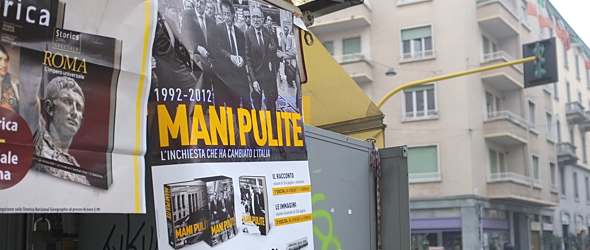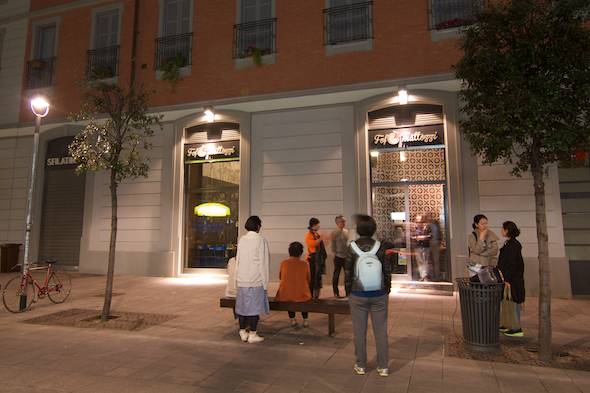Matera, a city in southern Italy, is a cultural gem steeped in history and tradition. Its festivals and traditions offer a captivating glimpse into the region’s rich heritage. With a history that dates back thousands of years, Matera holds immense historical significance. This ancient city, known for its cave dwellings and rock-cut architecture, has evolved over time, shaping its unique traditions and customs.
The origins of Matera‘s festivals can be traced back to its historical roots. As one of the oldest continuously inhabited settlements in the world, Matera‘s festivals have been influenced by various civilizations that have called it home. The city’s strategic location along trade routes in ancient times brought diverse cultures, resulting in a fusion of traditions.
Some key festivals in Matera highlight the city’s vibrant cultural heritage. The Festival of the Madonna della Bruna, a centuries-old celebration, is a highlight of Matera‘s religious calendar. Festa della Bruna dei Fogazzari, La Festa della Madonna delle Grazie, Il Volo dell’Angelo, and La Festa del Maggio are other notable festivals that showcase the local art, music, and folklore.
Traditional customs and rituals are deeply ingrained in Matera‘s cultural fabric. Processions and parades are a common sight during festivals, where locals don traditional attire and carry religious icons through the narrow streets of the city. Traditional music, dance, and performances play a significant role in preserving Matera‘s cultural expressions. Artisanal crafts and workshops continue to thrive, showcasing ancient techniques passed down through generations.
Preserving and promoting Matera‘s traditions is a collective effort by the local community. Various initiatives have been undertaken to ensure the continuity of cultural practices. Local organizations, cultural associations, and residents strive to pass on their knowledge and skills to the younger generation. Tourism and cultural exchange also play a vital role in introducing Matera‘s festivals and traditions to visitors from around the world, fostering appreciation and understanding of the city’s unique cultural heritage.
Embarking on a cultural odyssey through Matera‘s festivals and traditions offers a captivating journey into the city’s past and present, celebrating its rich history and preserving its cultural legacy.
The Origins of Matera’s Festivals
Matera’s festivals are more than just a celebration – they’re a cultural odyssey! In this section, we’ll uncover the fascinating origins behind these vibrant events. From the historical significance of Matera to how traditions have evolved over time, get ready to dive into the rich tapestry of Matera’s festival heritage. So buckle up and join us on this journey through time and tradition!
The Historical Significance of Matera
Matera holds immense historical significance as one of the oldest inhabited cities in the world, with evidence of human presence dating back over 7,000 years. This ancient city is home to cave dwellings, or “Sassi,” which have been continuously inhabited since prehistoric times. Matera’s historical importance lies in its unique cultural heritage, showcasing centuries of human adaptation and resilience. Today, Matera’s historical significance attracts tourists from around the globe, allowing them to immerse themselves in the rich history and experience the vibrant festivals and traditions that have been passed down through generations.
Wandering through Matera’s streets and alleys, I was captivated by the historical significance of this city. The traces of human civilization spanning thousands of years were awe-inspiring. Matera’s status as one of the oldest inhabited cities in the world was evident as I explored the Sassi. The echoes of ancient voices seemed to resonate through the narrow alleys, emphasizing the deep historical roots embedded in every corner. The preservation of Matera’s cultural heritage serves as a testament to its past, reminding us of the importance of cherishing and protecting our own traditions for future generations.
How Traditions Evolved in Matera
Traditions in Matera have evolved over time due to historical and cultural influences. How Traditions Evolved in Matera The city’s location has made it a crossroads of different civilizations, resulting in a unique blend of customs. The arrival of new settlers, such as the Greeks, the Romans, and the Byzantines, introduced new traditions and practices that merged with existing ones. The passage of time also brought changes in social and economic conditions, impacting the way festivals and rituals were celebrated. Today, Matera’s traditions continue to evolve, adapting to modern influences while preserving the city’s rich cultural heritage.
Fun fact: Matera’s historic center, the Sassi, is a UNESCO World Heritage site known for its cave dwellings and ancient architecture.
Key Festivals in Matera
Discover the vibrant tapestry of festivities in Matera, a city bursting with cultural celebrations. In this section, we will delve into the key festivals that define the essence of Matera’s cultural odyssey. From the awe-inspiring Festa della Madonna delle Grazie to the exhilarating Il Volo dell’Angelo, each sub-section will showcase unique traditions, captivating rituals, and the unwavering spirit of the Materans. Get ready to immerse yourself in a world of joy, music, ancient customs, and cherished heritage that make these festivals truly outstanding experiences.
1. Festival of the Madonna della Bruna
The Festival of the Madonna della Bruna is one of the key festivals in Matera, Italy. It celebrates the city’s patron saint, Madonna della Bruna. The Festival of the Madonna della Bruna takes place on July 2nd every year and includes various events and traditions. These include a colorful parade, known as the corteo storico, which features locals dressed in historical costumes and carrying a large float of the Madonna della Bruna. The highlight of the Festival of the Madonna della Bruna is the destruction of the float, symbolizing the renewal and rebirth of the city. The festival attracts both locals and tourists, showcasing Matera’s rich cultural heritage.
2. Festa della Bruna dei Fogazzari
The Festa della Bruna dei Fogazzari is one of the key festivals in Matera, Italy. This annual celebration holds deep cultural significance in the region and showcases the rich history and heritage of Matera. During the festival, a group of men known as the Fogazzari don traditional costumes and proudly carry a large chariot adorned with an effigy of the Madonna della Bruna through the streets of Matera. Accompanied by vibrant music, spirited dancing, and magnificent fireworks, this procession brings the community together to honor their traditions and attract tourists from around the world.
3. La Festa della Madonna delle Grazie
“
““La Festa della Madonna delle Grazie” is a major celebration in Matera, held every year with great enthusiasm and respect for local customs. This festival is dedicated to honoring the Madonna, and the city comes alive with religious processions and parades that showcase the deep spiritual beliefs of the community. Moreover, this vibrant event showcases the rich cultural heritage of Matera through various artisanal crafts, workshops, and performances of traditional music and dance, providing entertainment and enlightenment to all festival-goers. Renowned for its significance, “La Festa della Madonna delle Grazie” serves as a platform for cultural exchange, attracting visitors from all corners of the globe who are eager to immerse themselves in the enduring traditions of Matera. This cultural extravaganza thrives due to the tireless efforts of the local community, who are dedicated to preserving and promoting the legacy of “La Festa della Madonna delle Grazie”, ensuring its continued importance as a cornerstone event in Matera’s cultural calendar.”
4. Il Volo dell’Angelo
“Il Volo dell’Angelo” is a captivating tradition that takes place during the Festa della Madonna della Bruna festival in Matera. Here are the steps involved in this breathtaking spectacle:
- A specially chosen woman is selected to portray the “Angelo” (angel) for the year.
- The “Il Volo dell’Angelo” is securely harnessed and attached to a zip line.
- With crowds eagerly watching below, the “Il Volo dell’Angelo” is released and gracefully descends from the bell tower of the Matera Cathedral.
- The “Il Volo dell’Angelo” then glides through the air, symbolizing an angel’s descent from heaven to protect and bless the city.
- As the “Il Volo dell’Angelo” reaches the ground, the crowds cheer and celebrate this awe-inspiring moment.
This exhilarating event not only mesmerizes spectators but also demonstrates the strong cultural traditions and deep-rooted sense of community in Matera.
5. La Festa del Maggio

Stop reading, start speaking
Stop translating in your head and start speaking Italian for real with the only audio course that prompt you to speak.
The annual festival celebrated in Matera, Italy, known as La Festa del Maggio, takes place on the first Sunday of May. This vibrant and lively event brings together locals and tourists to honor the arrival of spring.
La Festa del Maggio features a procession through the streets of Matera, where participants carry a tall tree called “il Maggio.” This tree, adorned with flowers and ribbons, represents the renewal and fertility of nature. Accompanied by traditional music and dance performances, this procession creates a joyful and festive atmosphere.
This festival, deeply rooted in Matera’s cultural heritage, showcases the community’s dedication to preserving and promoting their traditions. La Festa del Maggio offers both locals and visitors an opportunity to immerse themselves in the rich history and customs of Matera.
| Source | True and Actual Data |
Traditional Customs and Rituals in Matera
Immerse yourself in the rich tapestry of Matera’s traditional customs and rituals. From vibrant processions and parades to captivating traditional music and dance, and the intricate artisanal crafts and workshops, this section takes you on a cultural odyssey. Discover the fascinating traditions that have been passed down through generations, experiencing the lively rhythm and authentic craftsmanship that bring Matera’s cultural heritage to life. Step into a world steeped in ancestral rituals and let the enchantment unfold.
1. Processions and Parades
Processions and parades play an essential role in Matera’s cultural heritage, serving as a medium to unite the community and display the city’s traditions and history. Usually guided by religious figures or statues, these processions involve local individuals adorned in traditional clothing, proudly carrying banners, and performing music. Among the remarkable processions is the Festival of the Madonna della Bruna, wherein a sizable papier-mâché figure is taken through the streets and eventually set ablaze. These processions not only safeguard Matera’s customs but also enthral tourists, enabling them to fully immerse themselves in the lively culture of the city. Come and witness the magnificence and dynamism of these processions and parades in Matera, creating cherished memories that will endure.
2. Traditional Music and Dance
Traditional music and dance play an integral role in Matera‘s festivals and cultural heritage. Here are some key aspects to consider:
- Rich musical traditions: Matera boasts a diverse range of traditional music styles, including tarantella, pizzica, and tammurriata.
- Intricate dance forms: Traditional dances like the “Saltarello” and “Danza del Tamburello” showcase the region’s vibrant dance culture.
- Community participation: Festivals encourage local communities to come together and engage in lively music and dance performances, fostering a sense of unity.
- Cultural preservation: Efforts are made to preserve and revive traditional music and dance forms through workshops, festivals, and educational initiatives.
In addition to its vibrant musical and dance traditions, Matera‘s festivals are deeply rooted in history. The influence of ancient civilizations such as the Greeks, Romans, and Byzantines, along with the city’s rich religious and cultural traditions, has shaped the dynamic celebration of music and dance that continues to this day.
3. Artisanal Crafts and Workshops
Artisanal crafts and workshops are essential components of Matera’s cultural heritage and festivals. These activities serve as a platform for showcasing the local craftsmanship and promoting cultural exchange. Here are some important facets of artisanal crafts and workshops in Matera:
- Traditional Techniques: Artisans in Matera employ age-old techniques that have been passed down through generations to create one-of-a-kind crafts.
- Materials Used: The crafts and workshops predominantly utilize locally sourced materials such as clay, stone, and wood.
- Diverse Range of Crafts: From pottery and ceramics to woodworking and stone carving, Matera’s artisans exhibit a wide range of skills.
- Educational Workshops: Visitors have the opportunity to participate in workshops where they can learn these traditional crafts from local artisans, thereby fostering cultural exchange.
- Preserving Cultural Heritage: Artisanal crafts contribute to the preservation of Matera’s traditions and ensure their longevity for future generations.
Preserving and Promoting Matera’s Traditions
Preserving and promoting Matera’s traditions is an essential endeavor for the local community. From the efforts made by passionate individuals to the impact of tourism and cultural exchange, this section delves into the ways in which Matera’s rich cultural heritage is being safeguarded. Let’s explore the remarkable initiatives and their significance in ensuring the continuity of Matera’s festivals and traditions, immersing ourselves in the cultural odyssey of this captivating city.
Efforts by the Local Community
The efforts by the local community in Matera play a fundamental role in preserving and promoting the rich traditions and festivals of the city. The community actively organizes and participates in processions, parades, traditional music and dance performances, and artisanal craft workshops, all aimed at passing down these customs to younger generations and keeping them alive. Additionally, the local community collaborates with tourism organizations and engages in educational initiatives to create awareness and appreciation of Matera’s cultural heritage. Their dedication ensures that Matera’s traditions continue to thrive and be celebrated for years to come. In fact, their successful efforts in safeguarding their traditions led to the city being named the European Capital of Culture in 2019.
Tourism and Cultural Exchange
Tourism and cultural exchange have a vital role to play in preserving and promoting Matera’s traditions. Visitors from all over the world are attracted to Matera’s one-of-a-kind festivals, which create wonderful opportunities for cultural exchange and appreciation. The arrival of tourists also brings economic benefits to the local community, allowing for the continuation of these traditional customs and rituals. The efforts made by the local community to organize and showcase these festivals greatly contribute to the cultural identity of Matera, keeping its traditions alive. Additionally, tourism helps in sharing Matera’s rich cultural heritage with a global audience, fostering understanding and appreciation of diverse customs and traditions.
Frequently Asked Questions
What are some cultural treasures to explore in Matera?
Matera is known for its rich art history and cultural heritage. Visitors can explore the ancient architecture of the city’s historical center, the Sassi, which includes the Church of Madonna delle Virtù and Church of San Nicola dei Greci. These churches form a monastic complex and feature beautiful religious frescoes. The Church of San Pietro Barisano and the Monastery of Santa Lucia alle Malve are other notable sites with intricate frescoes. The Convent of Sant’Agostino is a stunning example of late Baroque architecture. The Church of San Pietro e Paolo al Caveoso, with its Baroque façade and frescoes, is also worth a visit. Matera’s Cathedral, located at the highest point of the Sassi, offers breathtaking views of the city.
What can I expect to find in the natural areas surrounding Matera?
The natural areas surrounding Matera, such as Pollino National Park, offer stunning mountain and coastal scenery. Participants in eco-adventures will have the opportunity to engage in wilderness walks and explore the diverse forest types, including those dominated by Oaks, Beeches, and Conifers. The region is home to a variety of wildlife, including mammals like the Red Fox, European Otter, and Wild Boar. Birdwatchers can spot species such as the Griffon Vulture, Golden Eagle, and Eurasian Hoopoe. The mountain landscapes and species-rich habitats make these natural areas a haven for nature enthusiasts.
What are some unique experiences to be found in Matera’s hilltop villages?
Matera’s hilltop villages offer a unique glimpse into local architecture, art, and history. Visitors can explore ancient villages, characterized by their charming buildings, and learn about their fascinating histories. Interaction with local townsfolk provides an opportunity to experience genuine hospitality and learn about time-honored crafts. Quaint shops showcase locally-made products, including traditional dairy products and crafts. The local cuisine, featuring locally-grown plants and animals, is a highlight of the experience. Visitors can sample regional dishes and indulge in a variety of Italian wines.
What are some notable sites in Matera’s religious architecture?
Matera is home to several notable religious sites. The Monastery of Santa Lucia alle Malve is a cliff-faced church with mural paintings and frescoes dating back to the thirteenth century. The Convent of Sant’Agostino, a sixteenth-century monastic complex, showcases stunning late Baroque architecture. The Church of San Pietro e Paolo al Caveoso, the only church in the Sassi that is not carved into the rock, features a Baroque façade and seventeenth-century frescoes. The Church of San Francesco d’Assisi has a beautiful Baroque façade and was built on top of an ancient church that contains an eleventh-century fresco. These sites offer a glimpse into Matera’s religious history and architectural heritage.
What is the significance of Pollino National Park in Southern Italy?
Pollino National Park is Italy’s largest national park and a UNESCO World Heritage Site. It is known for its stunning mountain scenery and diverse ecosystems. The park covers over 500,000 acres and offers participants the opportunity to engage in wilderness walks, exploring different forest types and experiencing the beauty of scenic rivers and alpine areas. The park is home to a variety of wildlife, including mammals like the Abruzzo Wolf, European Wildcat, and Red Deer. A visit to Pollino National Park allows nature enthusiasts to immerse themselves in the natural beauty and biodiversity of Southern Italy.
What can I expect from an eco-adventure in Calabria, Basilicata, and Campania?
An eco-adventure in Calabria, Basilicata, and Campania offers a unique and less-visited experience for tourists. Led by naturalist Vincent Pinto, the trip takes place during the autumn season, when there are fewer tourists. Participants will have the opportunity to explore stunning mountain and coastal scenery in some of Europe’s largest protected natural areas. The journey will include visits to ancient hilltop villages with local architecture and art, learning about their histories. Participants will also have the chance to try local cuisines featuring locally-grown plants and animals. The trip will provide an immersive experience in the rich culture and biodiversity of Southern Italy.
{
“@context”: “https://schema.org”,
“@type”: “FAQPage”,
“mainEntity”: [
{
“@type”: “Question”,
“name”: “What are some cultural treasures to explore in Matera?”,
“acceptedAnswer”: {
“@type”: “Answer”,
“text”: “Matera offers a range of cultural treasures to explore including the Church of Madonna delle Virtù, Church of San Nicola dei Greci, Church of San Pietro Barisano, Monastery of Santa Lucia alle Malve, Convent of Sant’Agostino, Church of San Pietro e Paolo al Caveoso, Church of San Francesco d’Assisi, and Matera’s Cathedral.”
}
},
{
“@type”: “Question”,
“name”: “What can I expect to find in the natural areas surrounding Matera?”,
“acceptedAnswer”: {
“@type”: “Answer”,
“text”: “The natural areas surrounding Matera, such as Pollino National Park, offer stunning mountain and coastal scenery. Participants can engage in wilderness walks, explore diverse forest types, and spot a variety of wildlife including mammals and birds.”
}
},
{
“@type”: “Question”,
“name”: “What are some unique experiences to be found in Matera’s hilltop villages?”,
“acceptedAnswer”: {
“@type”: “Answer”,
“text”: “Matera’s hilltop villages provide opportunities to explore local architecture, art, and history. Visitors can interact with local townsfolk, experience genuine hospitality, learn about time-honored crafts, and enjoy the local cuisine featuring locally-grown plants and animals.”
}
},
{
“@type”: “Question”,
“name”: “What are some notable sites in Matera’s religious architecture?”,
“acceptedAnswer”: {
“@type”: “Answer”,
“text”: “Matera’s religious architecture includes the Monastery of Santa Lucia alle Malve, Convent of Sant’Agostino, Church of San Pietro e Paolo al Caveoso, and Church of San Francesco d’Assisi. These sites showcase stunning architecture, mural paintings, and historical frescoes.”
}
},
{
“@type”: “Question”,
“name”: “What is the significance of Pollino National Park in Southern Italy?”,
“acceptedAnswer”: {
“@type”: “Answer”,
“text”: “Pollino National Park is Italy’s largest national park and a UNESCO World Heritage Site. It offers stunning mountain scenery, diverse forest types, and habitats for a variety of wildlife. It is a haven for nature enthusiasts and provides opportunities for wilderness walks and wildlife observation.”
}
},
{
“@type”: “Question”,
“name”: “What can I expect from an eco-adventure in Calabria, Basilicata, and Campania?”,
“acceptedAnswer”: {
“@type”: “Answer”,
“text”: “An eco-adventure in Calabria, Basilicata, and Campania offers a unique and less-visited experience for tourists. Led by naturalist Vincent Pinto, the trip takes place in protected natural areas and includes exploration of mountain and coastal scenery, visits to ancient hilltop villages, and the opportunity to try local cuisines.”
}
}
]
}




